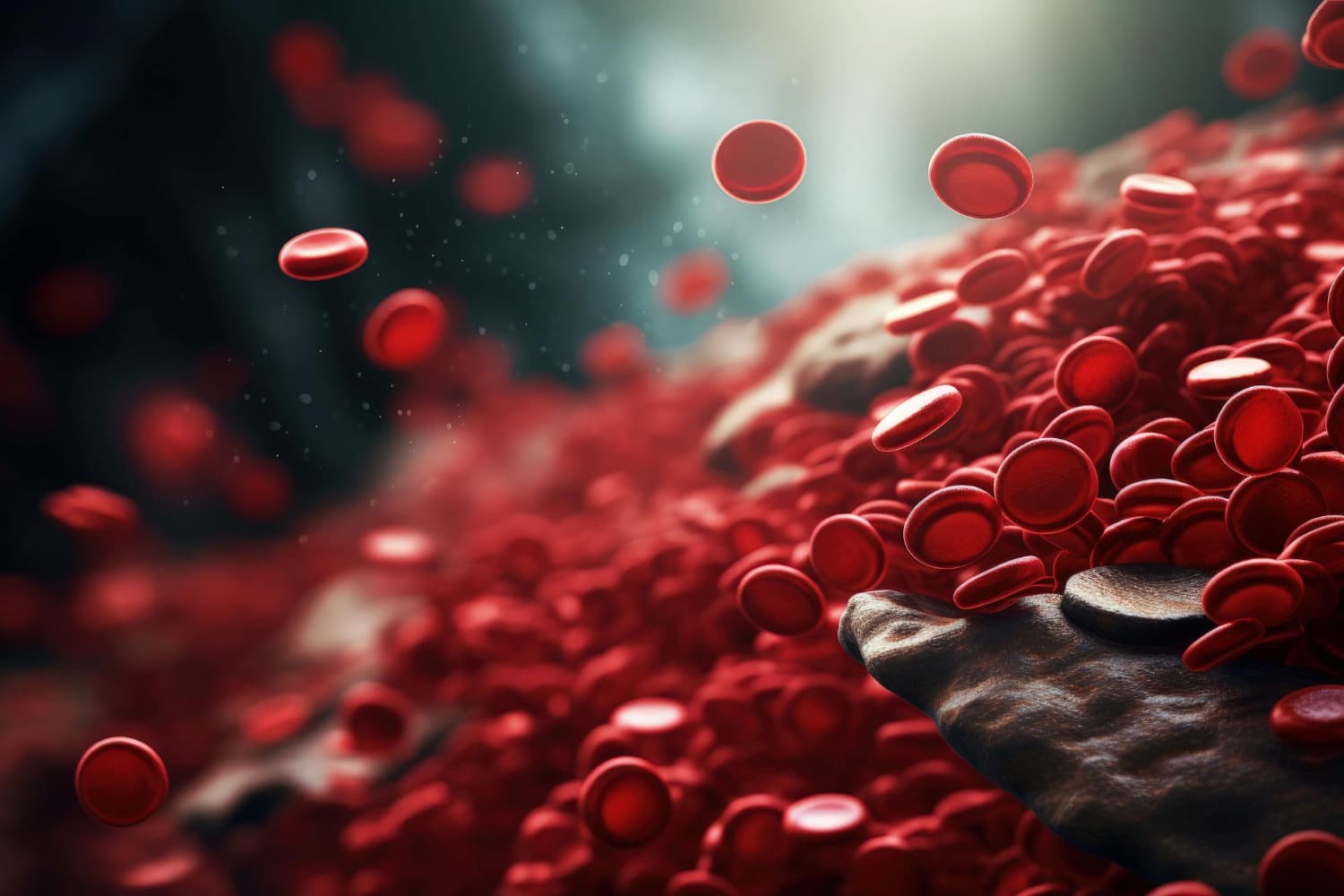Calcium in the body - what it is, properties, what it's in, products
Calcium in the body affects many aspects of health.


Learn more about our editorial process
.

Learn more about our editorial process
.

Learn more about our editorial process
.

Learn more about our editorial process
.
Why you can trust us
Articles on Natu.Care are written based on scientific research, data from government websites and other reliable sources. The texts are written in cooperation with doctors, nutritionists and other health and beauty experts. Articles are reviewed before publication and during significant updates.
.Learn more about our editorial process
.Information about advertisements
Content on Natu.Care may contain links to products from the sale of which we may receive a commission. When creating content, we adhere to high editorial standards and take care to be objective about the products discussed. The presence of affiliate links is not dictated by our partners, and we select the products we review ourselves completely independently.
.Learn more about our terms and Conditions
.It makes up more than 99% of the structure of your bones and teeth, and is the most abundant mineral in your body. I guess that's enough to get to know it better? I hope so, because calcium influences numerous processes, and adequate levels are crucial to your overall health.
We have put together the most important information about it together with the doctor, Kacper Nihalani.
.
From this article you will learn:
- What is calcium and what is its symbol.
- What is calcium?
- What functions are affected by calcium and how much to take. .
- What calcium is in and how calcium deficiency and excess are manifested.
- What is calcium?
- How is serum calcium tested and when to use supplementation. .

Sprawdź, co połączenie magnezu i witaminy B6 może zrobić dla Twojego zdrowia! -15% z kodem BLOG15
Natu.Care Magnez Premium + Witamina B6
Wesprzyj prawidłowe funkcjonowanie układu nerwowego, krwionośnego i mięśniowego dzięki synergicznemu działaniu magnezu i witaminy B6. Odkryj pełnię korzyści dla Twojego zdrowia każdego dnia!
Sprawdź cenę
Magnez Premium przyjmuję już od 2 miesięcy i naprawdę czuję się znacznie lepiej. Mam więcej energii, przestałam mieć skurcze i nie denerwuję się już tak szybko, co w przypadku bycia mamą – bywa wyzwaniem!@DianaW.
See also:
.
- Best magnesium - ranking .
- Iron - action .
- Potassium in the body
- Magnesium - properties .
- Copper - what it helps with .
- Iodine - when to take .
- Electrolytes - what are they? .
- Selenium - properties
What is calcium?
.
Calcium is an essential mineral for the human body, used to build and maintain healthy bones and teeth. It is important for the proper functioning of the nervous system, muscle contractions and blood clotting processesand.
It is the most common mineral in the human body - accounting for about 1-2% of human mass. Most (about 99%) of its deposits are stored in bones and teeth .
What symbol and formula does calcium have?
.
Calcium is a chemical element with the symbol Ca and atomic number 20. In the periodic table it belongs to the alkaline earth group of metals.
.
Calcium - properties and effects
.
Calcium is responsible for a number of key tasks in the body - it is a component of bones and teeth, influences metabolic processes, and also supports the functioning of the nervous system or blood clotting.
How does calcium function?
What functions does calcium have in the body?
.
Builds bones and teeth
.
More than 99% of the total calcium in the human body is stored in the bones and teeth. This mineral influences their structure, gives them strength, and provides rigidity. Collagen fibres form the framework of the bones, and minerals such as calcium are deposited there, building a tough, resilient structureand.
When blood calcium levels are low, the body can start to use up the resources stored in the bones, which will lead to a weakening of these elements. In contrast, normal levels of this component make the building and regeneration of bones and teeth go on without too much troubleand.
Study
.A review of 43 studies from 2022, involving a total of 7382 participants, examined the effects of calcium supplementation on bone mineral density bone and bone mineral content in people under 35 years of age. The research paper suggests, that calcium supplementation was associated with an increase in both indices particularly in the neck of the femurand.
Promotes the functioning of the nervous system
.
Calcium is involved in the transmission of impulses between nerve cells. It acts as a kind of 'courier' - its ions penetrate the nerve cell upon receiving an impulse, leading to the release of a neurotransmitter, the compound responsible for transmitting the signal to the next celland.
When calcium penetrates a nerve cell, it changes its electrical charge, leading to the sending of a nerve impulse. Without adequate levels of calcium in the body, the nerve impulse can be weakened, potentially affecting the proper function of the nervous system .
Responsible for muscle contractions
.
Calcium is involved in the transmission of signals from the nervous system to the muscles, which enables controlled contractions. When the nerve cell sends a signal to the muscle cell (in response to a movement command), calcium is released from the muscle cell's internal stores. This increase activates proteins that enable the muscle fibres to contract.
After the contraction is over, calcium is quickly 'deposited back' into the stores, allowing the muscle to relaxand.
.
Study
A review of 18 studies involving 3140 participants was conducted in 2022. The research paper tested the effect of increased calcium intake on lowering systolic and diastolic blood pressure. The mineral was found to be effective, especially in young people. Although the reduction in systolic blood pressure was small (2 mmHg), the experts reported that it was associated with an approximately 10% lower risk of stroke and a 7% lower mortality from coronary heart diseaseand.
.
Influences the blood clotting process
.
Calcium is important for many of the enzymes involved in the blood clotting process. It is the ions of this mineral that are essential for the proper functioning of the so-called clotting cascade, where a series of enzymatic reactions trigger the formation of a clotand.
When a blood vessel is injured, clot formation begins immediately to prevent further bleeding. Calcium aids this action by speeding up the formation of fibrin fibres - the main component of the clot, which effectively plugs the injured blood vessel and helps to stop bleedingand.
The following is an example of this.
A lack of adequate calcium in the body leads to impaired clotting, which can result in an increased risk of bleeding or bruising.
.
Promotes hormone secretion
.
Calcium plays a significant role in the production and secretion of hormones. To explain this, it should be noted, that there is a complex interaction between blood calcium levels and the hormones that regulate these levels, such as parathormone, insulin and calcitoninand.
Parathormone is a hormone produced by the parathyroid glands, which release it when blood calcium levels are reduced. The main functions of parathormone are to increase the absorption of calcium from the gut and kidneys, and to stimulate the release of calcium from the bones into the bloodand.
Calcium also affects the secretion of insulin, a hormone produced by the pancreas that is essential for the metabolism of glucose in the blood.
.
Natu.Care Collagen Premium 5000 mg, mango & passion fruit

- Collagen content: 5000 mg marine collagen hydrolysate
- Additional active ingredients: vitamin C, low molecular weight hyaluronic acid (and L-theanine and coenzyme Q10 in cocoa flavoured collagen or vitamin A and vitamin E in mango–passion fruit flavoured collagen)
- Form: powder sachets
- Dose: 1 sachet per day
- Sufficient for: 30 days
Product description
Fish collagen from the Natu.Care brand in a dose of 5000 mg, based on certified ingredients of the best quality. Regular supplementation will positively influence the appearance of the skinóry, hairów and nails – they will be rebuilt and strengthened from the inside.
In addition to collagen, which is valuable for health and beauty, it also offers other active ingredients that help to maintain a youthful complexion, shiny hair and strong nails.
The formula contains a sufficient portion of the active ingredient to positively affect joints, the musculoskeletal system and immunity.
Natu.Care Premium Collagen is available in two flavours – Cacao Bloom and Rise&Shine. Both formulas are based on the following active ingredients: marine collagen hydrolysate, wild roseóbud extract and hyaluronic acid.
Additionally, Cacao Bloom contains natural L-theanine, coenzyme Q10 and defatted Dutch cacao. Rise&Shine instead contains vitamin E and vitamin A.
These are the best collagens in the world.
These best fish collagens on the market also rós taste – Cacao Bloom is a treat for chocolate lovers. Rise&Shine will appeal to those whoólike the refreshing taste of mangoófruit and passion fruit.
Pros and cons
Pros:
- Vitamin C supports the body's collagen production, enhancing its effectiveness.
- An effective dose of hyaluronic acid, which additionally supports skin hydration and joint health.
- Fish collagen absorbs 50% better. Additionally, the manufacturer specifies the fish species it is sourced from (Atlantic cod).
- The composition has been tested by the independent and accredited J.S. Hamilton laboratory.
- MSC (Marine Stewardship Council) quality certification, which confirms that the collagen source supports sustainable fishing practices.
Cons:
- None.
Additional information
Natu.Care's fish collagen receives praise for its delicious taste. You won't find the fishy aftertaste that often comes through in other collagens. Plus, you have two tasty flavors to choose from: cocoa and mango-passionfruit.
Active ingredients like coenzyme Q10, hyaluronic acid, and natural L-theanine provide anti-inflammatory and antioxidant benefits while slowing down aging processes.
User review
Super, after about 6 weeks of use, the skin on my face became noticeably firmer. Wonderful taste.
Ania ZalewskaNatu.Care customer
Natu.Care Premium collagen 10 000 mg, mango-maracuja

- Collagen content: 10,000 mg marine collagen hydrolysate
- Additional active ingredients: vitamin C, low molecular weight hyaluronic acid (and L-theanine and coenzyme Q10 in cocoa flavoured collagen or vitamin A and vitamin E in mango–passion fruit flavoured collagen)
- Form: powder sachets
- Dose: 1 sachet per day
- Sufficient for: 30 days
Product description
One of the strongest collagens on the market, whichós provides as much as 10,000 mg in a daily serving. This allows the formula to effectively support the condition of the skin, hair and nails.
With this supplement, you will support your beauty, which will allow you to visually stop the ageing process and feel a second youth!
Natu.Care Collagen Premium 10 000 mg comes in two flavours – cherry and mango-maracuja. Both formulas have the same product backbone – collagen, hyaluronic acid and vitamin C.
In the cherry version you additionally find glucosamine, chondroitin and Indian frankincense resin extract. Mango-maracuja, on the other hand, contains vitamin E and vitamin A.
Pros and cons
Pros:
- Tested collagen formula – SeaGarden, whose effects have been confirmed in clinical studies.
- Effective dose of hyaluronic acid, additionally moisturizing the skin and positively impacting joint health.
- Vitamin C supports the body’s natural collagen production.
- The composition has been tested by the independent and accredited J.S. Hamilton laboratory.
- The product has an MSC (Marine Stewardship Council) quality certification – the collagen source supports sustainable fishing practices.
Cons:
- None.
Additional information
Users praise Natu.Care Collagen Premium for the easy dissolvability of the powder.
User review
I noticed a significant improvement in my skin texture after a few weeks of taking collagen regularly. My complexion is now as soft as velvet!
Natu.Care Collagen Premium 10000 mg, cherry

- Collagen content: 10,000 mg of hydrolyzed bovine collagen
- Additional active ingredients: vitamin C, low molecular weight hyaluronic acid, glucosamine, chondroitin, extract of Indian frankincense resin (boswellia serrata)
- Form: powder sachets for drinking
- Serving: 1 sachet per day
- Lasts for: 30 days
Product description
One of the strongest collagens on the market, providing as much as 10,000 mg per daily serving. This product can effectively support the condition of joints, skin, hair, and nails.
With this supplement, you will support your skeletal and joint system as well as your beauty, helping you visually halt the aging process and feel rejuvenated!
Pros and cons
Pros:
- The daily portion of collagen is very large – as much as 10,000 mg.
- Proven collagen formula – COLLinstant, whose effectiveness has been confirmed in clinical studies.
- Effective dose of hyaluronic acid, which additionally moisturizes the skin and positively affects joint health.
- Vitamin C supports the body's natural collagen production.
- Glucosamine is a fundamental building block of compounds found in joint cartilage and a component of collagen that gives elasticity to connective tissue in tendons.
- Chondroitin is a natural component found in the human body, mainly in cartilage. This large molecule (mucopolysaccharide) has the ability to absorb water, which helps maintain the elasticity and resilience of cartilage.
- Frankincense resin extract supports blood circulation and joint mobility and reduces their stiffness. It may help alleviate inflammatory conditions.
- The composition has been tested by the independent and accredited J.S. Hamilton laboratory.
Cons:
- None.
Additional information
Users praise Natu.Care Collagen Premium for the easy dissolving of the powder.
Premium Sodium Butyrate
Product description
Premium Sodium Butyrate is a natural support for your digestive system. With a high dose of butyric acid (940 mg), it supports the regeneration of the intestinal mucosa, improving gut health and function, and aids in the absorption of nutrients. By taking care of your intestines, you're taking care of the health of your entire body.
Studies involving people suffering from irritable bowel syndrome confirm that sodium butyrate is ideal for supporting issues related to bacterial flora imbalances (for example, after antibiotic therapy), constipation and diarrhea, inflammation of the intestinal mucosa, or a diet low in fiber.
Premium Sodium Butyrate capsules are made using the innovative DRcaps® technology. This guarantees that the active ingredients in the product are protected from the destructive effects of stomach acids and digestive enzymes. As a result, we can be sure that the beneficial ingredients are released in the small intestine and are fully absorbed by our body.
Premium Sodium Butyrate from Natu Care is 100% tested, and its composition contains only the highest quality raw materials.
Pros and cons
Pros:
- Supports digestive system function
- Helpful for various gastrointestinal conditions, including IBS
- High dose of butyric acid in each capsule
- Eco-friendly, clean, and tested composition
- Free from added sugar, gluten, GMOs, and lactose
- Innovative capsule technology - DRcaps
Cons:
- None
Additional Information
Take 3 capsules daily at any time of the day, preferably with a meal. Swallow the capsules whole with water.
Premium Sodium Butyrate is intended for adults.
The product should be used under medical supervision.
User review
I've been using the product for 2 weeks. My stomach feels lighter, and my digestion has improved. I recommend it.
Natu.Care Premium Magnesium + Vitamin B6

- Magnesium content per day: 305 mg
- Additional active ingredients: Vitamin B6 (2.1 mg)
- Form: capsules
- Serving size: 3 capsules per day
- Sufficient for: 30 days
Product description
The Premium Magnesium + Vitamin B6 dietary supplement is a comprehensive product that combines three organic forms of magnesium (citrate, malate, and diglycinate) and vitamin B6 in highly absorbable forms.
Magnesium is an essential mineral without which our bodies cannot function properly. It supports the immune, nervous, and muscular systems, maintains electrolyte balance, and is involved in cell division and the regulation of mental functions.
Research shows that magnesium supplementation is even more effective when accompanied by vitamin B6, which is included in our product. Vitamin B6 is responsible for the proper functioning of the nervous and immune systems, as well as the proper functioning of the heart.
If you want to safely get rid of feelings of fatigue, concentration problems, hair loss, muscle cramps, trembling, or irritability, reach for Premium Magnesium from Natu.Care, tested by the independent, certified laboratory J.S. Hamilton Poland.
Pros and cons
Pros
- Supports the proper functioning of the nervous and immune systems.
- Reduces feelings of fatigue and tiredness.
- Maintains proper psychological functions.
- The purity of the ingredients (free from anti-caking agents, artificial fillers, and additives such as titanium dioxide, microcrystalline cellulose, talc, magnesium stearate, and silicon dioxide) has been confirmed by laboratory tests.
- High absorption of ingredients.
- Soft capsules that are easy to swallow.
- Suitable for vegetarians and vegans.
Cons
- None.
Additional information
Take with a meal, 3 capsules per day.
The capsules should be taken with at least 250 ml of water.
If you have trouble sleeping, it is advisable to take 1 capsule in the morning and 2 capsules in the evening, no later than 4 hours before bedtime.
Avoid combining with products high in calcium (milk, yogurt, cheese), as this may negatively affect magnesium absorption.
Pregnant and breastfeeding women should consult a doctor before starting supplementation.
User review
I’m very impressed with the speed of delivery. The product itself is of high quality and absorbs well. After two weeks of supplementation, I’ve noticed a significant improvement in muscle recovery, especially during periods of intense training. I highly recommend it!
Product description
The dietary supplement contains omega-3ᵀᴳ, or omega-3 acids in the form of trójglyceridesów. Scientific studies suggest that this form of fatty acidsós up to 2 times better absorbed than the estersós present in many dietary supplements on the market. This means that you are assured of their effectiveness and of supplying yourself with valuable omega acids.
Fatty acids omega-3 are derived from wild anchovy oil. It is a rich source of healthy fats that are essential for the health of the cardiovascular, immune and nervous systems, as well as the proper function of vision, joints muscles.
Scientific research suggests that wild anchovies are a good source of healthy fats.
Scientific research also suggests that an adequate intake of omega-3 fatty acidsós protects against and supports the treatment of depression and anxiety disorders. In addition, omega-3s influence the hydration and appearance of the skinóry and support healthy sleep.
.
The formula contains a total of 750 mg of EPA+DHA acidsós, which is three times higher than the recommended minimum of 250 mg for the Polish population. Omega-3 TG Premium has studies indicating that its TOTOX is 9, which is a very good result.
Supplementation of omega-3 fatty acidsóis recommended for anyone who does not eat 1–2 portions (approximately 300 g) of oily fish per week. Children during growth, seniors, physically active people, vegans and vegetarians, as well as patients undergoing cardiovascular treatment and prevention of heart disease also have an increased need.
Pros and cons
The dietary supplement contains omega-3ᵀᴳ, or omega-3 acids in the form of trójglyceridesów. Scientific studies suggest that this form of fatty acidsós up to 2 times better absorbed than the estersós present in many dietary supplements on the market. This means that you are assured of their effectiveness and of supplying yourself with valuable omega acids.
Fatty acids omega-3 are derived from wild anchovy oil. It is a rich source of healthy fats that are essential for the health of the cardiovascular, immune and nervous systems, as well as the proper function of vision, joints muscles.
Scientific research suggests that wild anchovies are a good source of healthy fats.
Scientific research also suggests that an adequate intake of omega-3 fatty acidsós protects against and supports the treatment of depression and anxiety disorders. In addition, omega-3s influence the hydration and appearance of the skinóry and support healthy sleep.
.
The formula contains a total of 750 mg of EPA+DHA acidsós, which is three times higher than the recommended minimum of 250 mg for the Polish population. Omega-3 TG Premium has studies indicating that its TOTOX is 9, which is a very good result.
Supplementation of omega-3 fatty acidsóis recommended for anyone who does not eat 1–2 portions (approximately 300 g) of oily fish per week. Children during growth, seniors, physically active people, vegans and vegetarians, as well as patients undergoing cardiovascular treatment and prevention of heart disease also have an increased need.
Additional information
The dietary supplement contains omega-3ᵀᴳ, or omega-3 acids in the form of trójglyceridesów. Scientific studies suggest that this form of fatty acidsós up to 2 times better absorbed than the estersós present in many dietary supplements on the market. This means that you are assured of their effectiveness and of supplying yourself with valuable omega acids.
Fatty acids omega-3 are derived from wild anchovy oil. It is a rich source of healthy fats that are essential for the health of the cardiovascular, immune and nervous systems, as well as the proper function of vision, joints muscles.
Scientific research suggests that wild anchovies are a good source of healthy fats.
Scientific research also suggests that an adequate intake of omega-3 fatty acidsós protects against and supports the treatment of depression and anxiety disorders. In addition, omega-3s influence the hydration and appearance of the skinóry and support healthy sleep.
.
The formula contains a total of 750 mg of EPA+DHA acidsós, which is three times higher than the recommended minimum of 250 mg for the Polish population. Omega-3 TG Premium has studies indicating that its TOTOX is 9, which is a very good result.
Supplementation of omega-3 fatty acidsóis recommended for anyone who does not eat 1–2 portions (approximately 300 g) of oily fish per week. Children during growth, seniors, physically active people, vegans and vegetarians, as well as patients undergoing cardiovascular treatment and prevention of heart disease also have an increased need.
Expert opinion
The dietary supplement contains omega-3ᵀᴳ, or omega-3 acids in the form of trójglyceridesów. Scientific studies suggest that this form of fatty acidsós up to 2 times better absorbed than the estersós present in many dietary supplements on the market. This means that you are assured of their effectiveness and of supplying yourself with valuable omega acids.
Fatty acids omega-3 are derived from wild anchovy oil. It is a rich source of healthy fats that are essential for the health of the cardiovascular, immune and nervous systems, as well as the proper function of vision, joints muscles.
Scientific research suggests that wild anchovies are a good source of healthy fats.
Scientific research also suggests that an adequate intake of omega-3 fatty acidsós protects against and supports the treatment of depression and anxiety disorders. In addition, omega-3s influence the hydration and appearance of the skinóry and support healthy sleep.
.
The formula contains a total of 750 mg of EPA+DHA acidsós, which is three times higher than the recommended minimum of 250 mg for the Polish population. Omega-3 TG Premium has studies indicating that its TOTOX is 9, which is a very good result.
Supplementation of omega-3 fatty acidsóis recommended for anyone who does not eat 1–2 portions (approximately 300 g) of oily fish per week. Children during growth, seniors, physically active people, vegans and vegetarians, as well as patients undergoing cardiovascular treatment and prevention of heart disease also have an increased need.
Natu.Care Vitamin D 2000 UI
Product description
Vitamin D plays a crucial role in our health and well-being. It affects calcium and phosphate metabolism, which translates to healthy bones and teeth. It also helps regulate the immune system, and studies indicate its influence on the functioning of the nervous system.
Vitamin D, although called a “vitamin,” is actually a prohormone that our body produces on its own, primarily under the influence of sunlight. Unfortunately, our modern lifestyle contributes to deficiencies of this essential vitamin. Working in enclosed office buildings, using (necessary!) SPF creams, and covering the body with clothing all make it very difficult, if not impossible, to obtain adequate levels of vitamin D from sunlight. This is why appropriate, year-round supplementation is so crucial.
Vitamin D from Natu.Care is a well-tested vitamin D3 suspended in safflower oil, a plant known for its numerous health benefits. The convenient, easy-to-swallow capsule will make supplementation a part of your daily, healthy routine, improving your overall well-being.
Pros and cons
Pros:
- Ensures proper functioning of the immune system
- Supports the maintenance of healthy bones and teeth
- Maintains proper heart, kidney, and muscle function
- Tested by an independent, certified laboratory
- Convenient and easy-to-swallow capsule
- Clean composition - free from added sugar, gluten, GMOs, lactose, and without preservatives or colorants
Cons:
- None.
Additional Information
Pregnant women and breastfeeding mothers should consult a doctor before using the product. This dietary supplement is intended for a healthy adult population up to the age of 75.
Collagen Booster - Glow Stories

- Active ingredients: bamboo shoot extract, Quatrefolic®, L-Methionine, L-cysteine, vitamin E, vitamin A, niacin (vitamin B3), vitamin B6, vitamin B2 (riboflavin), biotin, zinc, copper
- .
- Form: capsules
- .
- Dose: 1 capsule per day
- .
- Sufficient for: 60 days
- .
Product description
A dietary supplement containing vitamins, minerals and plant extracts thatósupport the skinóhand, hair and nails. The product is especially distinguished by the form of folate – it is Quatrefolic, whichós absorbed very well and is natural.
In addition to valuable vitamins and minerals, such as vitamin A, E, B3, B2 and biotin, the formula contains bamboo shoot extract, whichóry further enhances your beauty.
Pros and cons
A dietary supplement containing vitamins, minerals and plant extracts thatósupport the skinóhand, hair and nails. The product is especially distinguished by the form of folate – it is Quatrefolic, whichós absorbed very well and is natural.
In addition to valuable vitamins and minerals, such as vitamin A, E, B3, B2 and biotin, the formula contains bamboo shoot extract, whichóry further enhances your beauty.
Additional information
A dietary supplement containing vitamins, minerals and plant extracts thatósupport the skinóhand, hair and nails. The product is especially distinguished by the form of folate – it is Quatrefolic, whichós absorbed very well and is natural.
In addition to valuable vitamins and minerals, such as vitamin A, E, B3, B2 and biotin, the formula contains bamboo shoot extract, whichóry further enhances your beauty.
Daily calcium requirements
.
The daily calcium requirement depends on age. It also changes for women who are pregnant, when it is particularly important to ensure adequate nutrient concentrations in the body. How much calcium to take in each day?
|
Age . |
Daily calcium requirementsand |
|
0-6 months |
200 mg |
|
7-11 months |
260 mg |
|
1-3 years |
700 mg |
|
4-9 years |
1000 mg |
|
10-18 years |
1300 mg |
|
19-65 years old men |
1000 mg |
|
19-50 years old women |
1000 mg |
|
> 50 year old women |
1200 mg |
|
> 65 years old men |
1200 mg |
Pregnant women should take 1300 mg of calcium per day. However, during breastfeeding the requirement for this mineral does not increase - it remains at 1000 mg.
What calcium is in - sources in the diet
.
Products rich in calcium include seeds such as sesame, poppy or chia seeds, cheeses (such as Parmesan or Brie), natural yoghurt, sardines, salmon, beans or lentils. Dietary sources of calcium also include almonds, leafy vegetables (e.g. cabbage, spinach, kale), rhubarb, tofu or soya and cow's milkand.
.
The best way to provide calcium is to get it from a variety of foods. Include in your daily menu, for example:
.
- a glass of vegetable drink + two tablespoons of poppy seeds for oatmeal, .
- a slice of tofu with vegetables for lunch, .
- yogurt with seeds and nuts for dessert, .
Products rich in calcium - table
. .
|
Product . |
Calcium content per 100 gand |
|
Mac |
1440 mg |
|
Sesame |
975 mg |
|
Parmesan |
853 mg |
|
Chia seeds |
631 mg |
|
Sardines |
382 mg |
|
Salmon |
283 mg |
|
Almonds |
269 mg |
|
Tofu |
200 mg |
|
Fasola |
142 mg |
|
Cabbage |
141 mg |
|
Natural yoghurt |
121 mg |
What vegetables are rich in calcium?
.
Vegetables rich in calcium include kale, spinach, broccoli, radishes, swede, carrots, white cabbage, asparagus, beetroot or chicory. On a plant-based diet, calcium will also provide you with celery, parsley, leek, pumpkin, chives and legumes such as beans and chickpeas.
.
What is calcium in besides dairy products?
.
In addition to dairy products, calcium is present in many other products. Leafy vegetables like spinach and kale are particularly rich in this mineral. You can also find it in fish, especially sardines and salmon. Nuts, seeds (almonds, sesame or chia) and beans or chickpeas are also good sources of calcium.
Bioavailability of calcium
.
Plant products contain a significant amount of substances that limit the absorption of calcium in the body (oxalates and phytates). They bind to this mineral and form insoluble salts. Therefore, plant products have a low bioavailability and lower calcium content per standard serving than dairy productsand.
Dairy products, on the other hand, have a bioavailability of around 30%, so if you see on the product label that the product contains 200 mg/100 g, only 70% of this will be absorbed and used by the body .
.
Bioavailability of calcium in common foods
. . .
|
Product . |
% absorbed calciumand |
|
Strings . |
20-30% |
|
Broccoli |
40% |
|
Nuts and seeds |
20% |
|
Spinach |
5% |
|
Earnings |
30% |
|
Products enriched with calcium |
30% |
Shake it up!
Calcium fortified plant products (e.g. plant-based drinks) containing a high amount of this mineral per serving (around 300 mg in a glass) have a high bioavailability. But there is one catch - shake the packet vigorously before using the beverage, as up to 40% of the added calcium can settle to the bottom of the carton or bottleand.
Calcium - deficiency
.
Approximately 3.5 billion people worldwide are at risk of calcium deficiency. This condition can result from a number of factors, including poor diet, health conditions that prevent calcium absorption or insufficient exposure to sunlight, which is responsible for the synthesis of vitamin D3.
Cause of calcium deficiencyand:
.
- Diet low in calcium. People on a dairy-free diet are particularly prone to calcium deficiency, as dairy products are the best source of calcium - they contain lactose and a good calcium/phosphorus ratio. People on a plant-based diet may have a similar problem .
- Assimilation problems; Some health conditions, such as gastrointestinal diseases, can hinder the absorption of calcium from food, leading to calcium deficiency.
- Lactation. During lactation, there is an increase in calcium loss from the bones, but this condition passes after the breastfeeding period ends. It is best for a woman to ensure adequate calcium intake while still pregnant. .
- Lack of sufficient sun exposure. The body produces vitamin D3 when exposed to sunlight, which is necessary for calcium absorption. Therefore, insufficient amounts of this vitamin can result in calcium deficiency.
- Puberty. Calcium is an essential building material for bones and teeth. Adolescence is a period of intensive skeletal development. This is when the need for calcium increases significantly and calcium deficiencies can result in rickets. .
Study
A study of 122 healthy women (a minimum of three years after their menopause) tested the effect of calcium supplementation on bone mineral density. The average intake of this mineral was 750 mg in the patients and was increased to 1,000 mg per day. The scientific work lasted 2 years and the result showed a 43% increase in bone density index in the calcium supplement groupand.
Symptoms of calcium deficiency
.
Symptoms of calcium deficiency can include, but are not limited to, muscle weakness, heart problems or fatigue. What are the specific symptoms of this condition?
Fatigue
.
Chronic fatigue can be one of the symptoms of calcium deficiency. This mineral is needed for proper muscle function, so a deficiency can lead to feelings of weakness and constant fatigueand.
Poor oral health
.
Calcium deficiency can affect oral health in several ways. It can lead to dental problems such as tooth decay and increased tooth brittleness. In addition, it can also affect the gums, resulting in inflammation or bleedingand.
Muscle weakness
.
Calcium is essential for muscle function, so a deficiency can cause muscle failure, weakness and even cramps or seizures. These symptoms often have a negative impact on daily activity and functionand.
Heart problems
.
Because calcium is essential for the proper functioning of the heart muscle, a deficiency can result in serious heart problems. Like skeletal muscles, the heart can also experience the effects of calcium deficiency in the form of irregular rhythm or arrhythmiaand.
Cognitive problems
.
Calcium deficiency can affect brain function, leading to problems with memory and concentration. Calcium is essential for the proper conduction of nerve impulses in the brain, so low levels of calcium, can interfere with these processesand.
Neural system disorders
.
Calcium deficiency can result in nervous system disorders such as numbness and tingling in the hands, feet or face. This is because the mineral plays a key role in nerve conductionand.
What flushes calcium out of the body?
.
Calcium from the body can be flushed out due to various factors. Often it is due to unhealthy eating habits and lifestyle. Excessive consumption of caffeine and salt can lead to increased excretion of calcium by the kidneys, which will result in a calcium deficiency.
Calcium deficiency can be caused by the following factors.
Phosphoric acid-containing products, such as some fizzy drinks, can also contribute to calcium loss, as phosphorus competes with calcium for space in the bonesand.
Another factor that affects calcium concentrations in the body is excessive intake of protein. When proteins are metabolised, acidic compounds are formed which must be neutralised in the body. Calcium is often used in this process, leading to calcium depletionand.
.
In addition, excessive alcohol consumption and smoking can also cause calcium loss. Alcohol inhibits the body's ability to absorb the mineral, while smoking contributes to increased excretion from the body .
How to supplement calcium in the body
.
You can supplement calcium in the body mainly with the right diet and supplementation. Introducing calcium-rich foods into your diet, such as milk and other dairy products, green vegetables (broccoli, spinach), nuts, seeds, fish (sardines, salmon), or even some citrus fruits, can significantly increase the levels of this mineral in your bodyand.
.
Another method is calcium supplementation. Various preparations with this ingredient are available on the market. However, it is worth remembering that its excessive intake can also be unhealthy. Therefore, it is best to decide on supplementation after consulting your doctor or dieticianand.
Don't forget about adequate sun exposure too, which stimulates vitamin D production. It is essential for the body to absorb calcium properly, so sufficient levels are key to maintaining adequate calcium concentrations. Regular walks or outdoor activities can be very helpful in this aspectand.
Supplement consciously
.If you are considering supplementation, choose well absorbed forms of calcium: citrate, lactate, gluconate, diglycinate. Also, do not combine calcium at the same time with iron and meals rich in fat, fibre, oxalates and phytates - they interfere with the absorption of this mineraland.
..
Excess calcium
.
Excess calcium - a medical condition known as hypercalcaemia - occurs when calcium levels in the blood are higher than standard. This can be due to both natural causes and the side effects of certain medications.
Cause of excess calciumand:
- Hypoparathyroidism. It is a disease that causes excessive activity of the parathyroid glands, which produce a hormone that regulates calcium levels. And too much of this hormone leads to elevated calcium concentrations in the blood.
- Over-supplementation. Calcium overdose is often seen in people who take calcium supplements containing this ingredient for long periods of time.
- Cancer. Certain types of cancer, such as lung, breast or kidney cancer, can increase calcium levels. .
- Taking medications.Some medications (e.g. diuretics) can lead to increased blood calcium levels.
- Some genetic disorders. Diseases such as tuberculosis or hyperthyroidism can cause excess calcium.
Sometimes hypercalcaemia is a symptom that enables the diagnosis of a previously undetected malignancy. However, this is rare - more often it is the cancer that leads to excess calcium..

Kacper Nihalani doctor
.
What are the symptoms of excess calcium?
.
Overabundance of calcium leads to a variety of symptoms, which can be both subtle, minor and severe, affecting quality of life. The specific symptoms depend on the level of calcium in the blood and the duration of the condition. What are the most common symptoms?
- Fatigue and weakness, .
- depression, .
- insomnia, .
- frequent urination, .
- increased thirst, .
- digestive problems,
- digestive disorders,
- digestive problems,
- digestive disorders,
- digestion
- disorders of heart function, .
Serum calcium - testing
.
Serum calcium testing is a laboratory test to assess the level of calcium in the blood. It is most often ordered when a patient has symptoms that may indicate abnormal calcium levels, such as fatigue, weakness, abdominal pain or frequent urination.
Sometimes this test is also used as part of routine follow-up diagnosis in people with certain medical conditions, such as certain cancers, or in those taking medications that affect calcium levels in the body.
The test involves taking a blood sample, usually from the ulnar vein. The sample is then analysed in a laboratory and the results are usually available after a few days.
Total calcium is a very important part of the test.
Total calcium, ionised calcium and corrected calcium - what are the differences?
.
Total calcium, ionised calcium and corrected calcium are different types of blood tests that check the concentration of a particular substance in the body. How do the different solutions differ?"
- Total calcium. Indicates the total amount of calcium that is contained in the patient's blood serum. It consists of ionised calcium (50%), bound to acidic residues (10%) and proteins (approximately 40%).
- Ionised calcium. It is one of the fractions of total calcium that is most biologically active. It is also called free calcium, and its concentration in the body works well, for example, in people who have muscle cramps or heart rhythm disorders.
- Corrected calcium. Calculates a total calcium value that has been corrected, taking into account a theoretical blood albumin level of 40 g/l. This provides a universal result that is easy to compare to other patients.
The corrected calcium result is the most clinically useful in most cases..
 .
.
Kacper Nihalani doctor
.
What is the blood calcium standard?
.
The norm for blood calcium in an adult is 2.12-2.62 mmol/l (8.5-10.5 mg/dl). However, bear in mind that the specific values may vary depending on the laboratory where you carry out the test. Furthermore, the results should always be interpreted by a doctor or other qualified healthcare professional.
Calcium supplementation
.
Calcium supplementation is often recommended for people who may struggle to get enough of this nutrient with their diet. This is particularly true for those on a plant-based or dairy-free diet, seniors, menopausal women, those suffering from eating disorders or who have specialised diets, and those with lactose intolerance.
Supplementation of calcium is a good idea.
Remember, however, that the decision to take calcium supplementation should always be preceded by a consultation with a doctor or dietician.
In what forms is calcium available?
.
Calcium is available in many different forms, such as tablets, liquids or powder. These forms also vary in their degree of absorption.
- Tablets. Tablets are the most popular form of calcium supplementation, due to their ease of dosage and storage. They can contain different forms of the mineral, such as citrates or carbonated calcium, and are often fortified with vitamin D to facilitate the absorption of this nutrient in the diet.
- Liquids. Liquid forms of calcium have a higher bioavailability compared to tablets. They are usually available as drinking liquids or drops. .
- Powders. Calcium powders are an excellent alternative for people who have difficulty swallowing tablets. You can easily add the powder to meals or drinks for flexibility in dosing.
What calcium is best absorbed?
.
One of the best absorbed types of calcium is citrate. Studies suggest that it is absorbed better than carbonate, plus it can be taken on an empty stomach. Furthermore, calcium citrate can be supplemented by people who often have problems with heartburn.
How long can calcium be taken?
.
There is no set limit to how long calcium supplementation can last, but prolonged use of high doses can lead to adverse side effects such as kidney stonesand. Therefore, it is best to perform blood tests at the start of supplementation and repeat them a few months later to see if a deficiency is still present.
Calcium for children - is it worth it?
.
Calcium is extremely important for the proper development and growth of children, as it plays a key role in building strong bones and teeth. In addition, it is important for muscle function, blood clotting and the transmission of nerve impulses. Children at the age of intensive growth, especially during puberty, have a relatively high demand for this element.
Nevertheless, the decision to supplement calcium in children should always be preceded by consultation with a doctor or nutritionist. Although supplements with this ingredient are generally safe, excessive doses can lead to adverse side effects.
The following is an example.
In most cases, calcium requirements can be met with a balanced diet. Rich sources of this nutrient are dairy products, green leafy vegetables, beans, sesame seeds or almonds. If for some reason your diet is deficient in calcium, it is then worth considering calcium supplementation, but always after consulting your doctor.
.
Calcium in pregnancy
.
Calcium is an indispensable nutrient for mothers-to-be - it is involved in the formation of the baby's bones and teeth, as well as helping to transmit nerve signals and ensuring that the mother's muscle contractions are normal.
Calcium in pregnancy is an essential nutrient for mothers-to-be.
Nevertheless, the decision to supplement calcium during pregnancy should always be taken after consulting a doctor. This is because an excess can lead to serious side effects such as kidney stones or heart problems.
Pregnancy calcium supplementation should always be taken after consultation with a doctor.
What's more, many women are able to meet their calcium requirements through a balanced diet, rich in dairy products, fish, green leafy vegetables or seeds.
See also:
- Vitamin B12 - properties .
- Vitamin D3 - effects .
- Vitamin A - functions in the body .
- Vitamin B1 - properties .
- Vitamin E - effects .
- Pantothenic acid - what it is .
- Folic acid (vitamin B9) - properties .
- Vitamin B3 - effects
- Vitamin K - where it occurs
- Vitamin B6 - what it is .
- Vitamin C - properties .
Summary
.
- Calcium is a mineral essential for maintaining bone and tooth health.
- Calcium is the most important mineral for maintaining bone and tooth health.
- Calcium is the most common mineral in the human body, accounting for 1-2% of the human body weight.
- Calcium is the most common mineral in the human body.
- Daily calcium requirements depend on age and stage of life, as well as gender. .
- Calcium is present in a wide range of foods, including seeds, dairy products, some fish, beans, lentils, as well as almonds and leafy vegetables.
- Calcium deficiency is a major concern.
- Calcium deficiency can lead to muscle weakness, heart problems, tooth damage and fatigue. .
- Excess calcium, although rare, can result in health problems such as fatigue, depression, heart problems and muscle weakness. .
- Blood calcium concentration can be tested in a variety of ways, including measuring total calcium, ionised calcium, or corrected calcium.
- Calcium supplementation is recommended for people who may struggle to get enough of this nutrient from their diet, including those on a plant-based or dairy-free diet, seniors, menopausal women, people with eating disorders or with specialised diets.
FAQ
.How much calcium does milk contain?
.Milk is a good source of calcium in the diet. There is an average of 120 mg of calcium in 100 ml of cow's milk, which is about 12% of the recommended daily intake for an adult. The calcium in milk is also easily absorbed, thanks to the presence of other ingredients such as vitamin D and protein.
What foods are rich in calcium and vitamin D?
.Calcium and vitamin D are found in many foods. Rich sources of calcium are milk, cottage cheese, cheese, yoghurt or fish such as sardines and salmon. Vitamin D, which is necessary for the absorption of calcium, is found in oily marine fish (salmon, mackerel), liver, egg yolk and milk.
Vitamin D synthesis is also aided by exposure to the sun, so regular exposure to fresh air is recommended.
Is calcium a metal?
.Yes, calcium is a metal, belonging to the alkaline earth metal group. It is located in the second group of the periodic table of elements. In its pure state, it is a silvery, fairly soft metal, but in nature it is most often found in the form of compounds, such as calcium carbonate.
How to take calcium and magnesium?
.Calcium and magnesium are best taken along with a balanced diet. Rich sources of calcium are milk and milk products, green leafy vegetables or nuts. Magnesium, on the other hand, is found in whole grains, cereals, almonds and cocoa.
.What leaches calcium from bones?
.Unhealthy eating habits and an unfavourable lifestyle can contribute to the loss of calcium from bones. Excess fibre, alcohol, caffeine and sodium accelerate the excretion of this mineral from the body.
Also, prolonged sitting and lack of regular physical activity inhibit calcium absorption. Low levels of vitamin D, which is necessary for calcium absorption, also adversely affect bone health.
Provided that the body's vitamin D intake is low, it has a negative effect on bone health.
Magnesium and calcium - together or separately?
.Magnesium and calcium should be taken separately. Ilona Krzak, MSc in pharmacy, states, that these minerals are mutually exclusive. We therefore advise against simultaneous supplementation of both nutrients.
How does calcium work?
.Calcium is a key element for the body, involved in many vital processes. It controls muscle contractility and the function of cell membranes, regulates nerve conduction, and influences blood clotting.
.
Sources
.See all
.Calcium, I. of M. (US) C. to R. D. R. I. for V. D. and, Ross, A. C., Taylor, C. L., Yaktine, A. L., & Valle, H. B. D. (2011). Overview of Calcium. In Dietary Reference Intakes for Calcium and Vitamin D. National Academies Press (US). https://www.ncbi.nlm.nih.gov/books/NBK56060/
Avenue, 677 Huntington, Boston, & Ma 02115. (2020, October 19). Calcium. The Nutrition Source. https://www.hsph.harvard.edu/nutritionsource/calcium/
Cashman, K. D. (2002). Calcium intake, calcium bioavailability and bone health. The British Journal of Nutrition, 87 Suppl 2, S169-177. https://doi.org/10.1079/BJNBJN/2002534
Cormick, G., & Belizán, J. M. (2019). Calcium Intake and Health. Nutrients, 11(7), 1606. https://doi.org/10.3390/nu11071606
Cormick, G., Ciapponi, A., Cafferata, M. L., Cormick, M. S., & Belizán, J. M. (2022). Calcium supplementation for prevention of primary hypertension. The Cochrane Database of Systematic Reviews, 1(1), CD010037. https://doi.org/10.1002/14651858.CD010037.pub4
Dawson-Hughes, B., Harris, S. S., Krall, E. A., & Dallal, G. E. (1997). Effect of calcium and vitamin D supplementation on bone density in men and women 65 years of age or older. The New England Journal of Medicine, 337(10), 670-676. https://doi.org/10.1056/NEJM199709043371003
Drake, T. M., & Gupta, V. (2023a). Calcium. In StatPearls. StatPearls Publishing. http://www.ncbi.nlm.nih.gov/books/NBK557683/
Drake, T. M., & Gupta, V. (2023b). Calcium. In StatPearls. StatPearls Publishing. http://www.ncbi.nlm.nih.gov/books/NBK557683/
.Liu, Y., Le, S., Liu, Y., Jiang, H., Ruan, B., Huang, Y., Ao, X., Shi, X., Fu, X., & Wang, S. (2022). The effect of calcium supplementation in people under 35 years old: A systematic review and meta-analysis of randomized controlled trials. eLife, 11, e79002. https://doi.org/10.7554/eLife.79002
Mangano, K. M., Walsh, S. J., Insogna, K. L., Kenny, A. M., & Kerstetter, J. E. (2011). Calcium intake in the United States from dietary and supplemental sources across adult age groups: New estimates from the National Health and Nutrition Examination Survey 2003-2006. Journal of the American Dietetic Association, 111(5), 687-695. https://doi.org/10.1016/j.jada.2011.02.014
Recommendations for Calcium-A Nutrient of Concern | Dairy Nutrition. (2021, July 1). https://dairynutrition.ca/en/nutrients-milk-products/calcium/recommendations-calcium-nutrient-concern
Reid, I. R., Ames, R. W., Evans, M. C., Gamble, G. D., & Sharpe, S. J. (1993). Effect of calcium supplementation on bone loss in postmenopausal women. The New England Journal of Medicine, 328(7), 460-464. https://doi.org/10.1056/NEJM199302183280702
Reid, I. R., Bristow, S. M., & Bolland, M. J. (2015). Calcium supplements: Benefits and risks. Journal of Internal Medicine, 278(4), 354-368. https://doi.org/10.1111/joim.12394
Shkembi, B., & Huppertz, T. (2021). Calcium Absorption from Food Products: Food Matrix Effects. Nutrients, 14(1), 180. https://doi.org/10.3390/nu14010180
Straub, D. A. (2007). Calcium supplementation in clinical practice: A review of forms, doses, and indications. Nutrition in Clinical Practice: Official Publication of the American Society for Parenteral and Enteral Nutrition, 22(3), 286-296. https://doi.org/10.1177/0115426507022003286
Weaver, C. M., & Peacock, M. (2019). Calcium. Advances in Nutrition (Bethesda, Md.), 10(3), 546-548. https://doi.org/10.1093/advances/nmy086
Weaver, C. M., Proulx, W. R., & Heaney, R. (1999). Choices for achieving adequate dietary calcium with a vegetarian diet. The American Journal of Clinical Nutrition, 70(3 Suppl), 543S-548S. https://doi.org/10.1093/ajcn/70.3.543s
Yang, J., Punshon, T., Guerinot, M. L., & Hirschi, K. D. (2012). Plant calcium content: Ready to remodel. Nutrients, 4(8), 1120-1136. https://doi.org/10.3390/nu4081120
.Yu, E., & Sharma, S. (2023a). Physiology, Calcium. In StatPearls. StatPearls Publishing. http://www.ncbi.nlm.nih.gov/books/NBK482128/
..
Editorials
Meet the team



Fluoride is an essential mineral for the proper functioning of the body. How does it work and is it harmful? Check!

Iron deficiency is a dangerous condition leading to serious neurological and skin symptoms.

Phosphorus is a mineral element that supports bone health, nervous system function and also energy metabolism.



